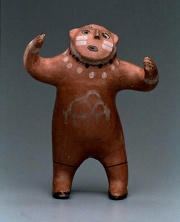Difference between revisions of "Slip"
Jump to navigation
Jump to search
(username removed) |
m (Text replace - "== Authority ==" to "== Sources Checked for Data in Record ==") |
||
| Line 16: | Line 16: | ||
| − | == | + | == Sources Checked for Data in Record == |
* Ralph Mayer, ''A Dictionary of Art Terms and Techniques'', Harper and Row Publishers, New York, 1969 (also 1945 printing) | * Ralph Mayer, ''A Dictionary of Art Terms and Techniques'', Harper and Row Publishers, New York, 1969 (also 1945 printing) | ||
Revision as of 18:33, 1 May 2016
Description
A thin, aqueous suspension of clay in water prepared to a creamy consistency. Slip was originally used as a thin, light-color coating over red clay pieces. Now slip is used for decorating pottery. It is available in many colors, such as white, black, blue, and green. Slip that contains a significant portion of non-clay material is called engobe.
Synonyms and Related Terms
engobe (Fr., Port.); barbotine (Fr.); slip (Ned.)
Additional Images
Sources Checked for Data in Record
- Ralph Mayer, A Dictionary of Art Terms and Techniques, Harper and Row Publishers, New York, 1969 (also 1945 printing)
- Richard S. Lewis, Hawley's Condensed Chemical Dictionary, Van Nostrand Reinhold, New York, 10th ed., 1993
- Encyclopedia Britannica, http://www.britannica.com Comment: "slipware." Encyclopædia Britannica. 2005. Encyclopædia Britannica Premium Service 4 Feb. 2005 .


